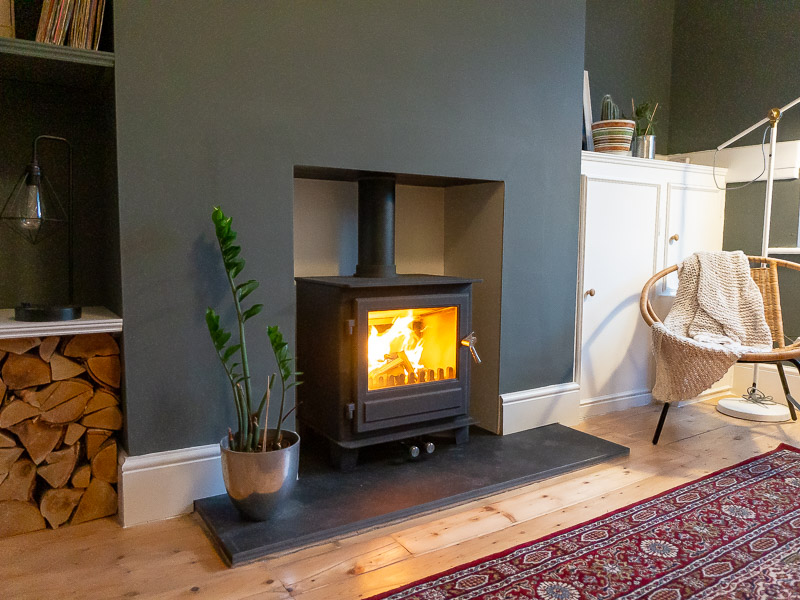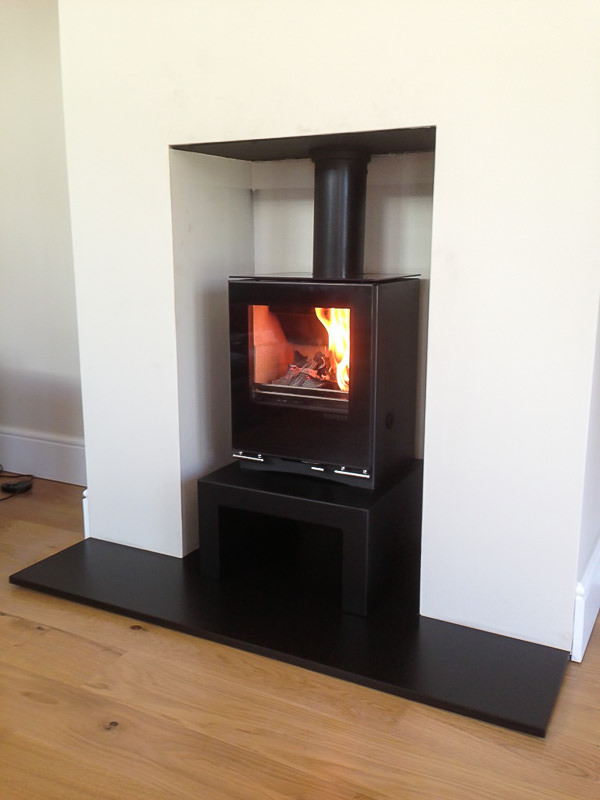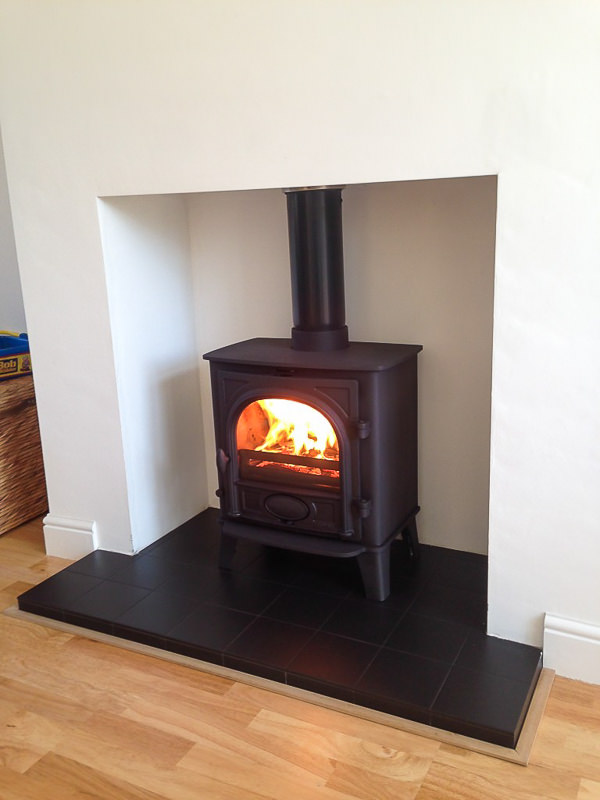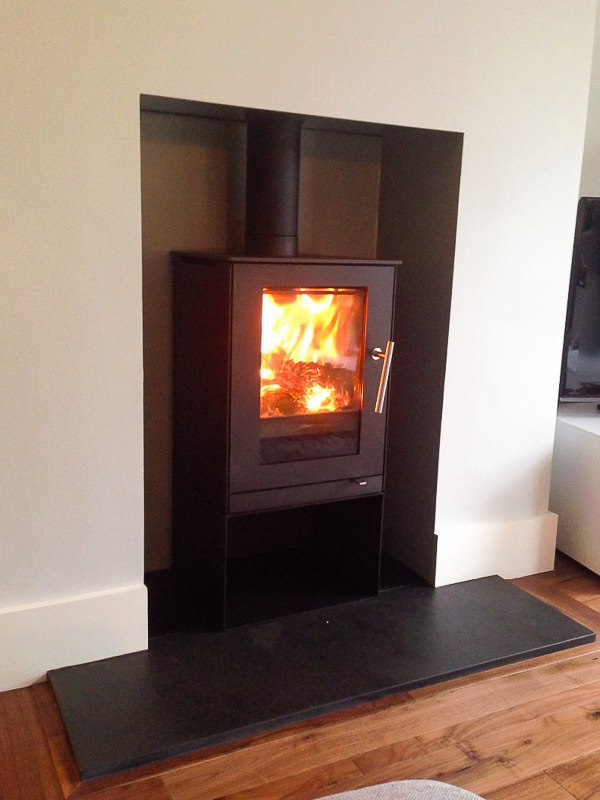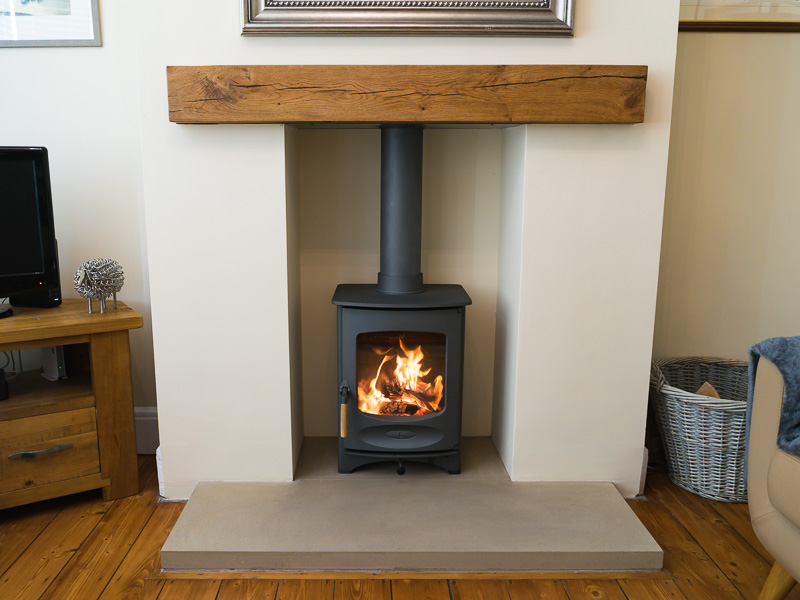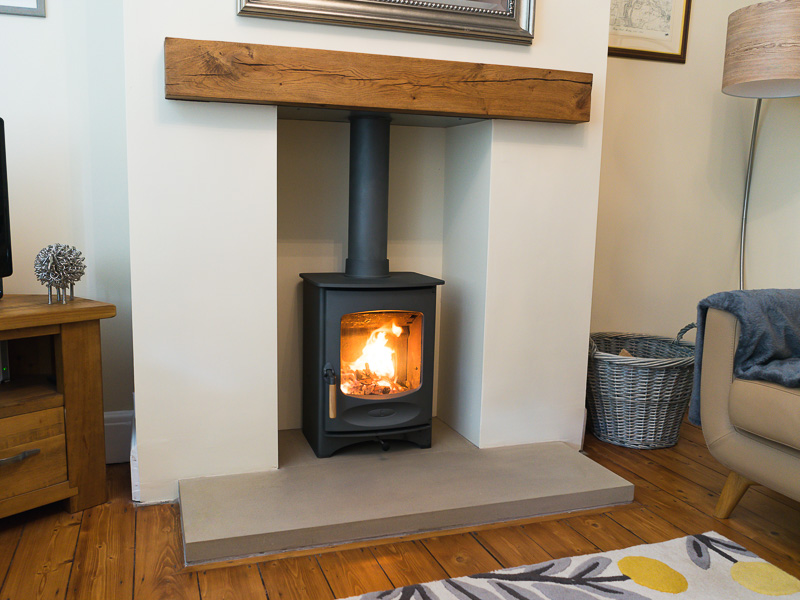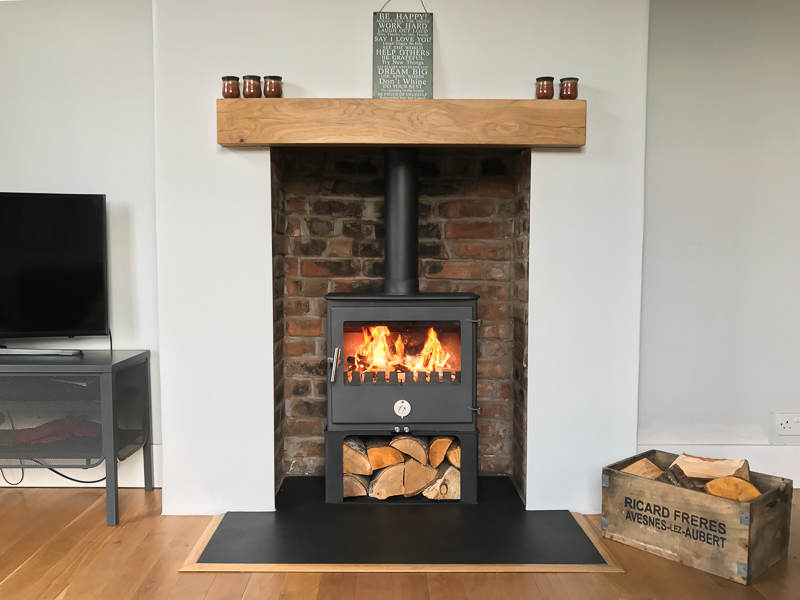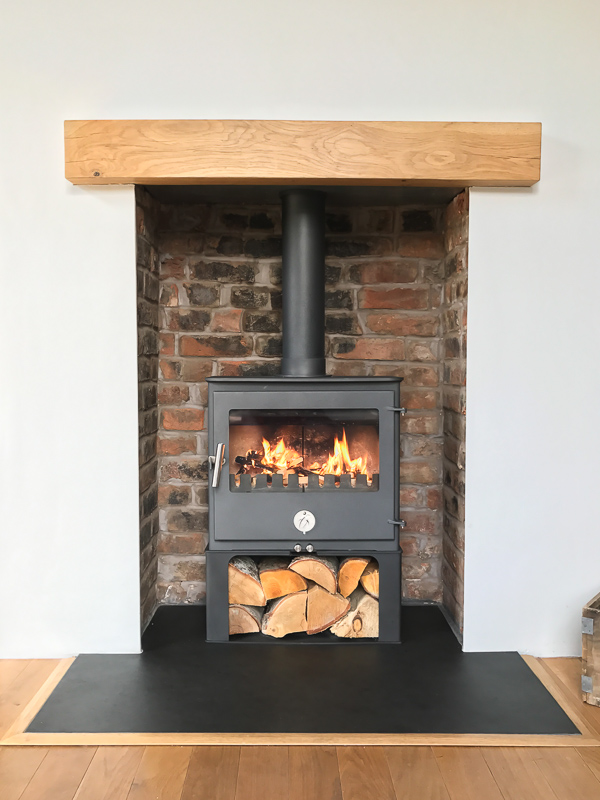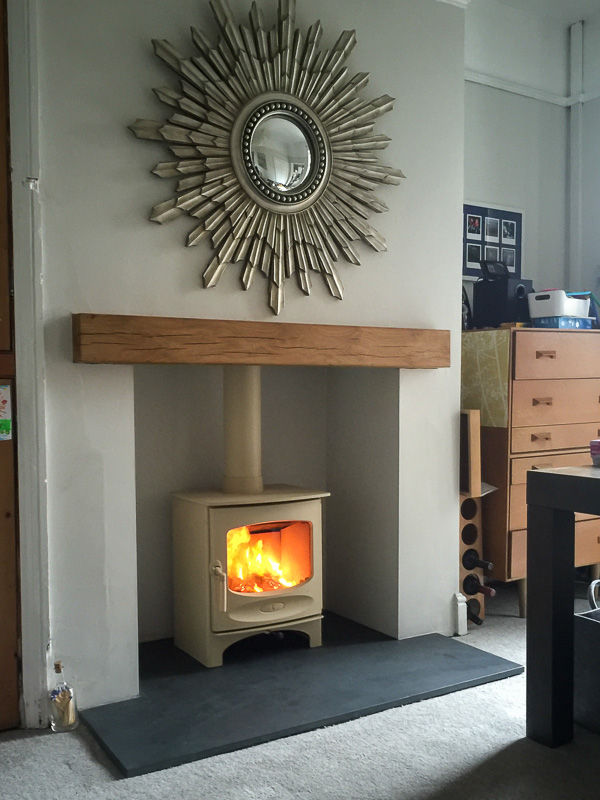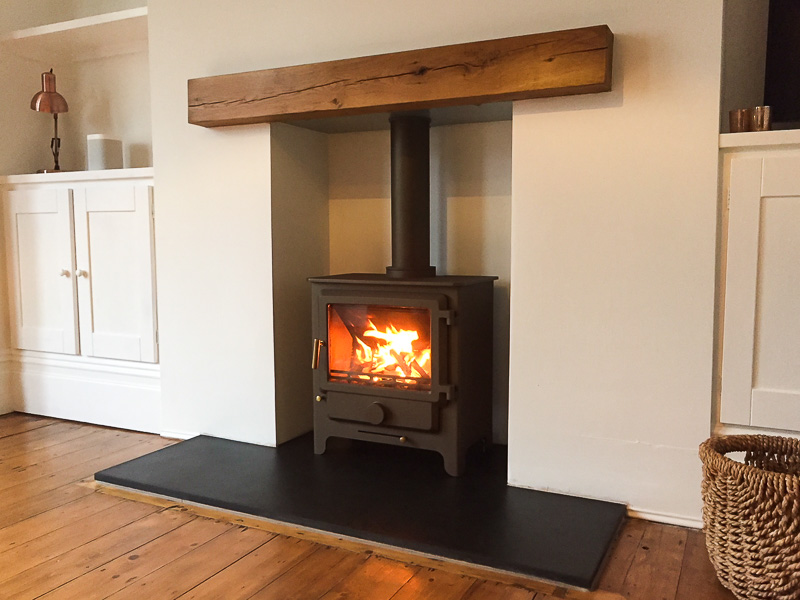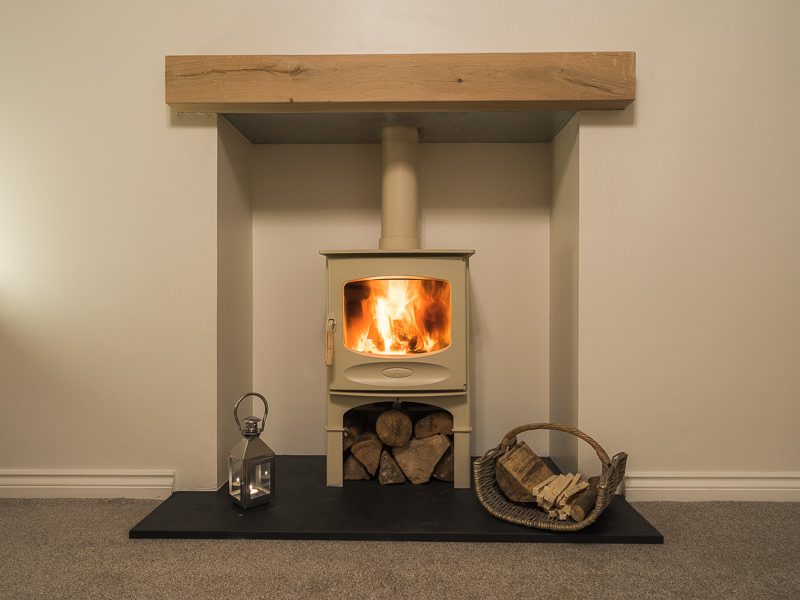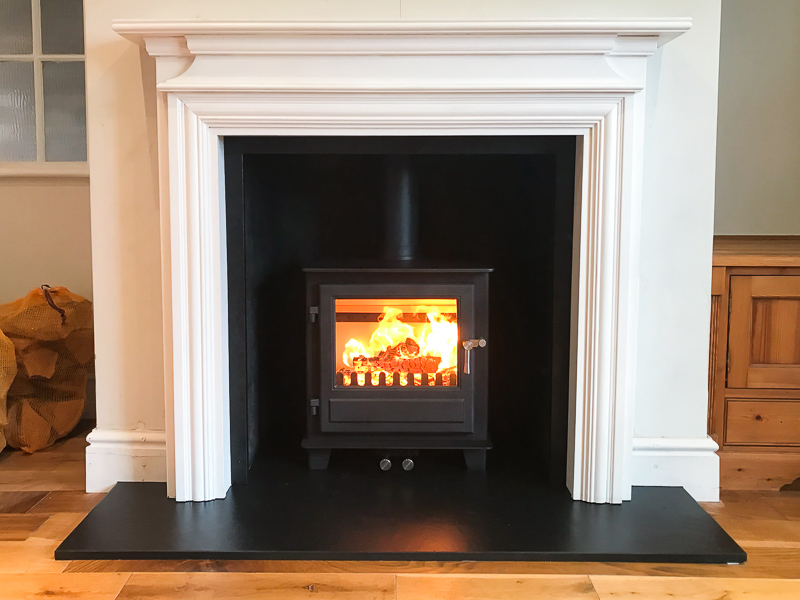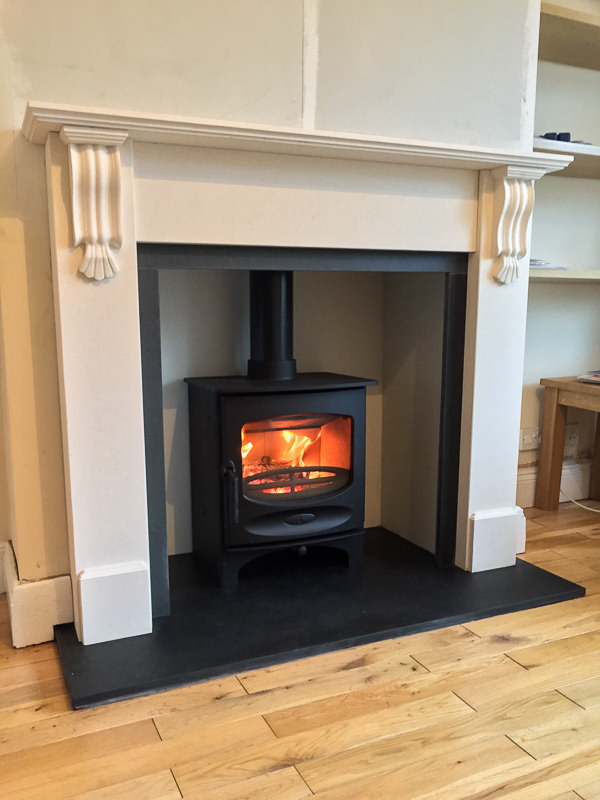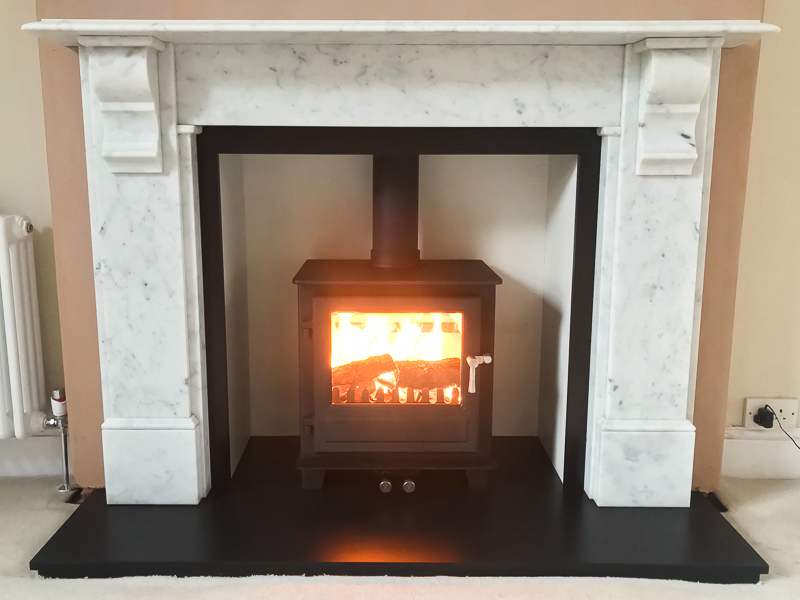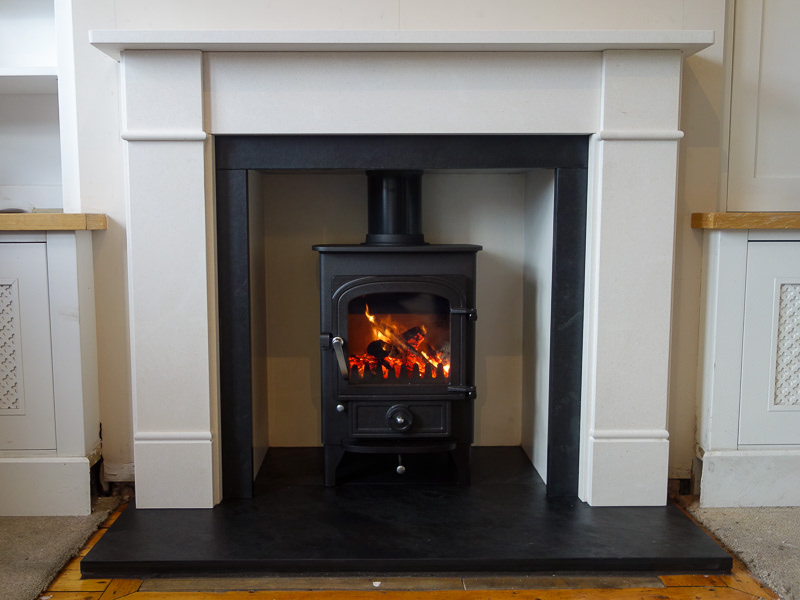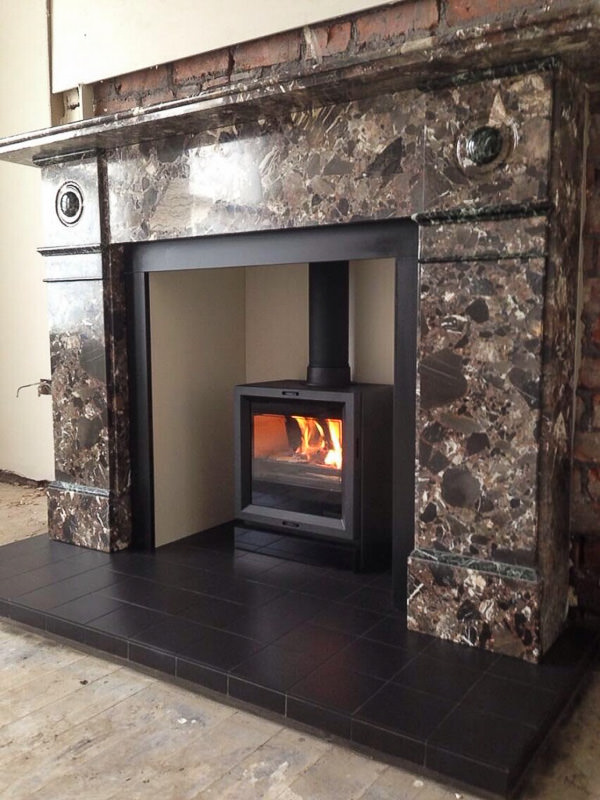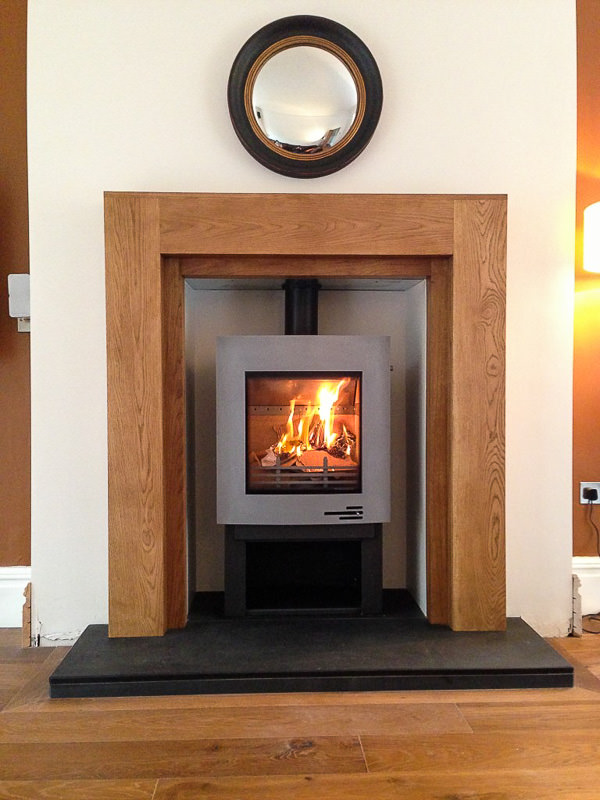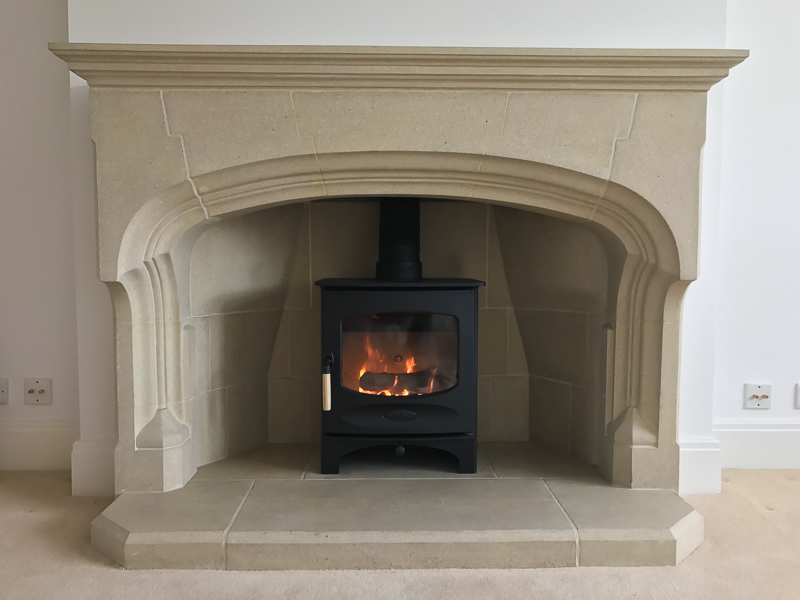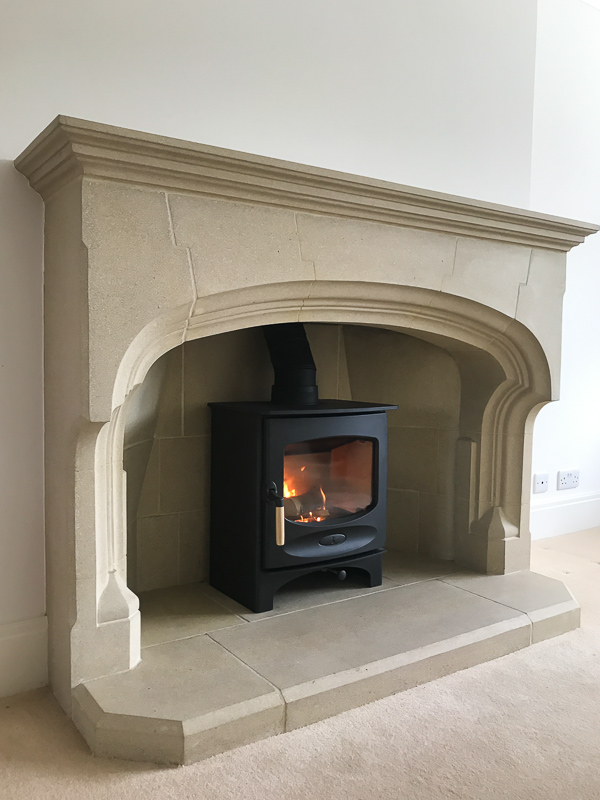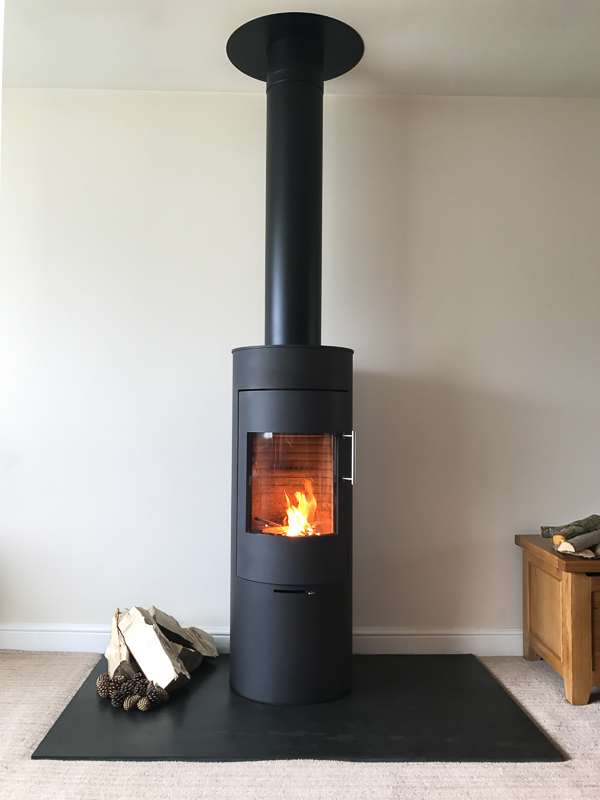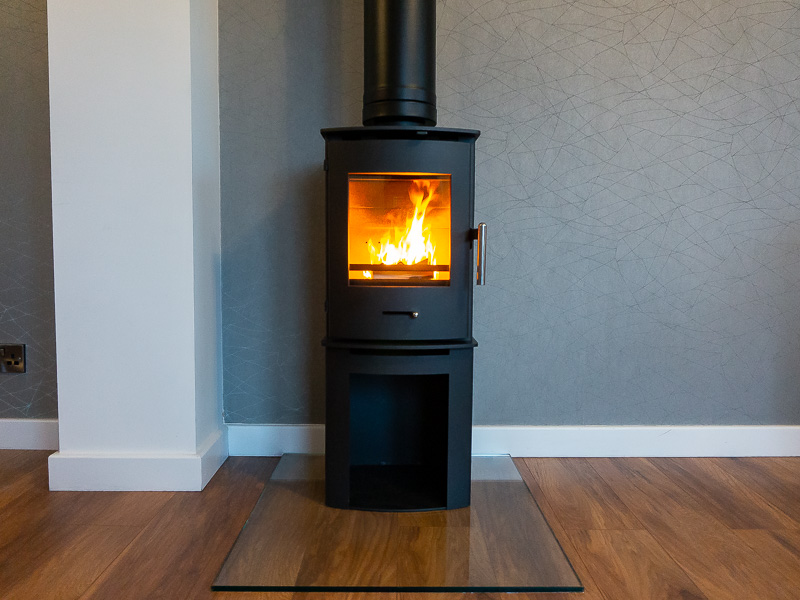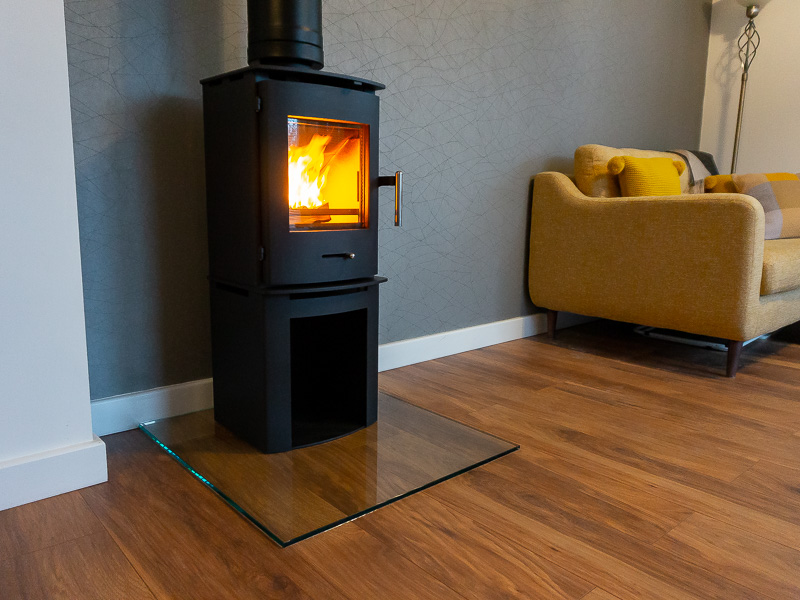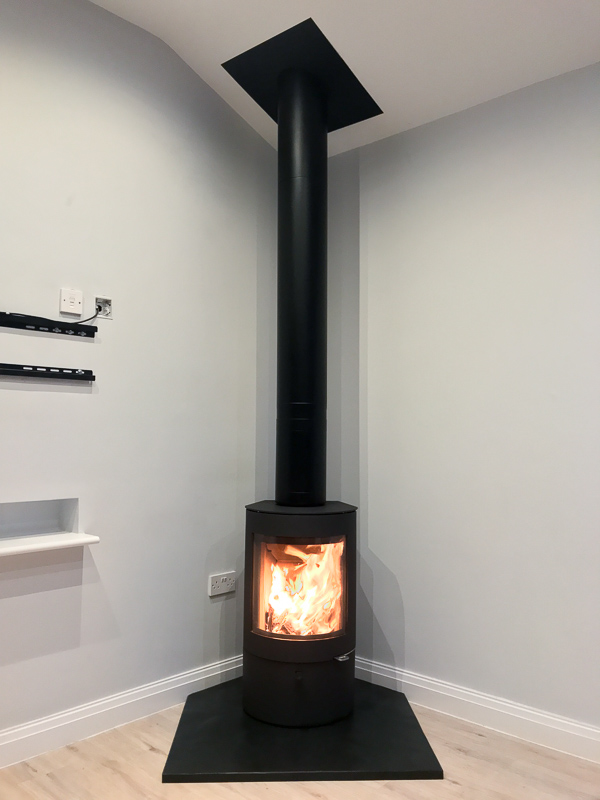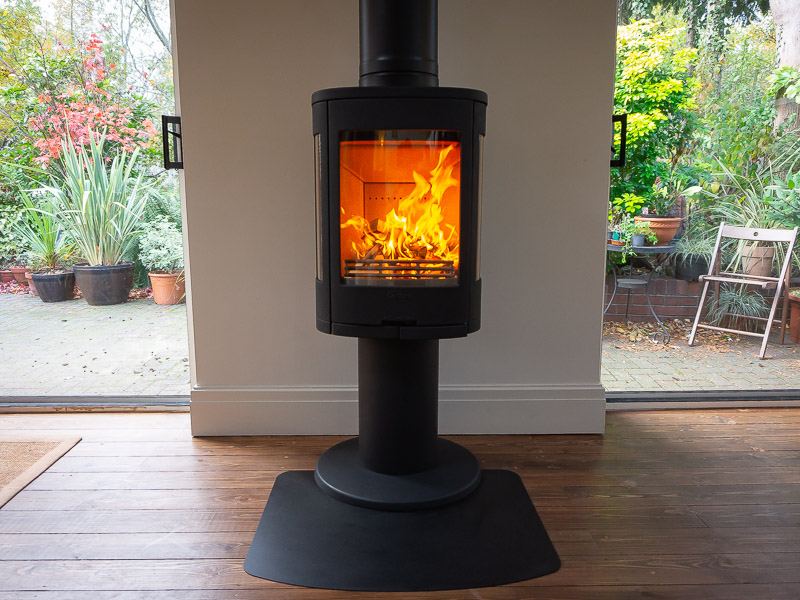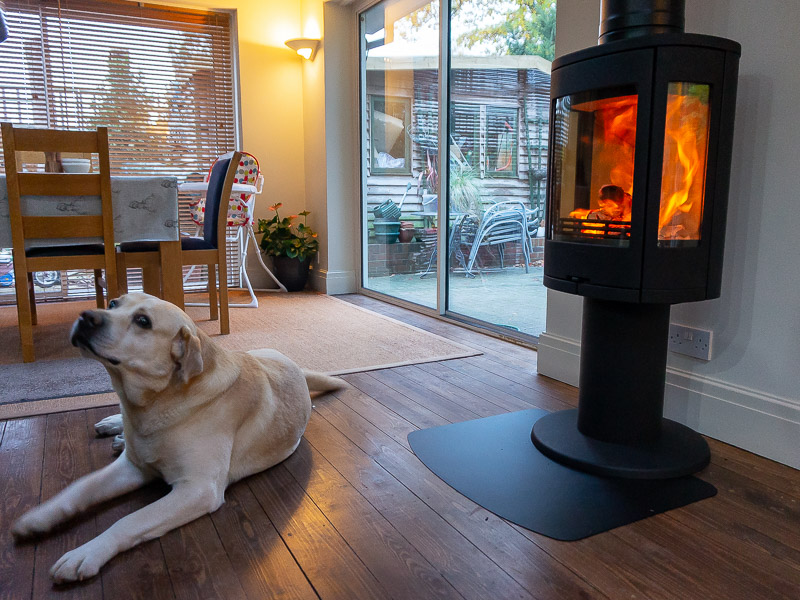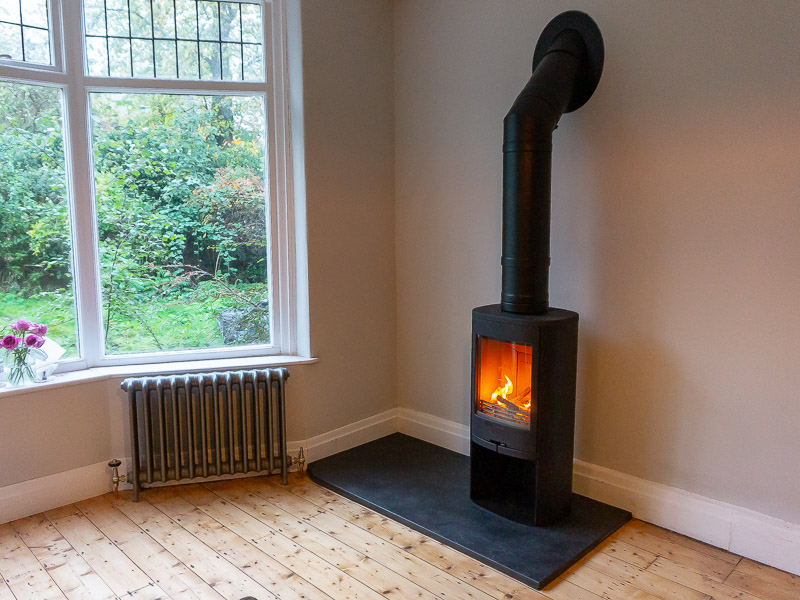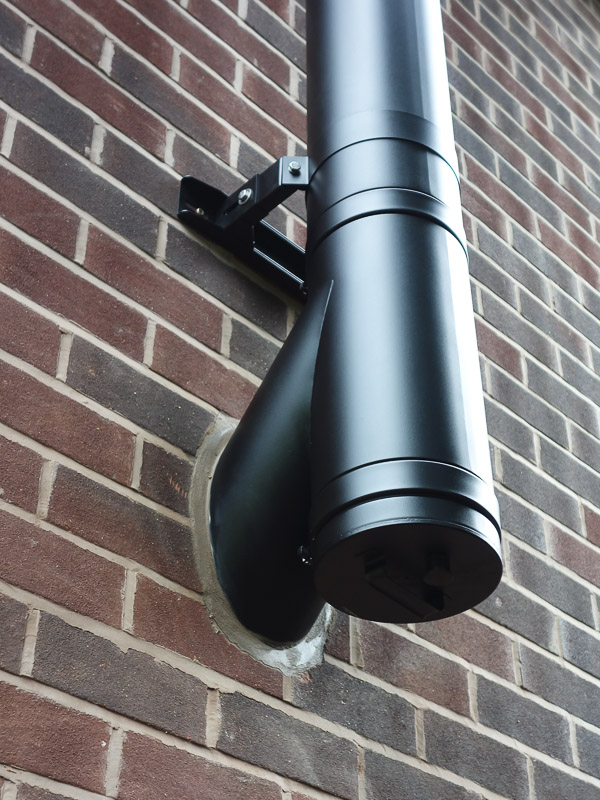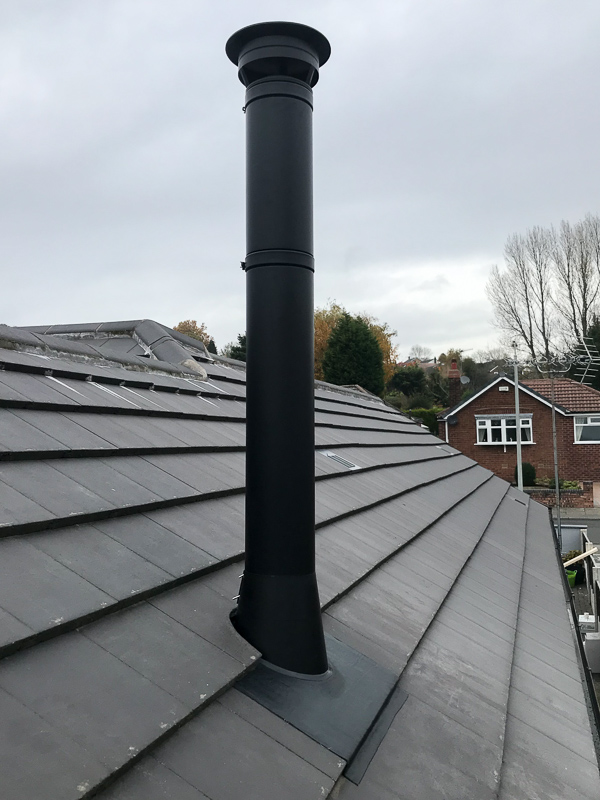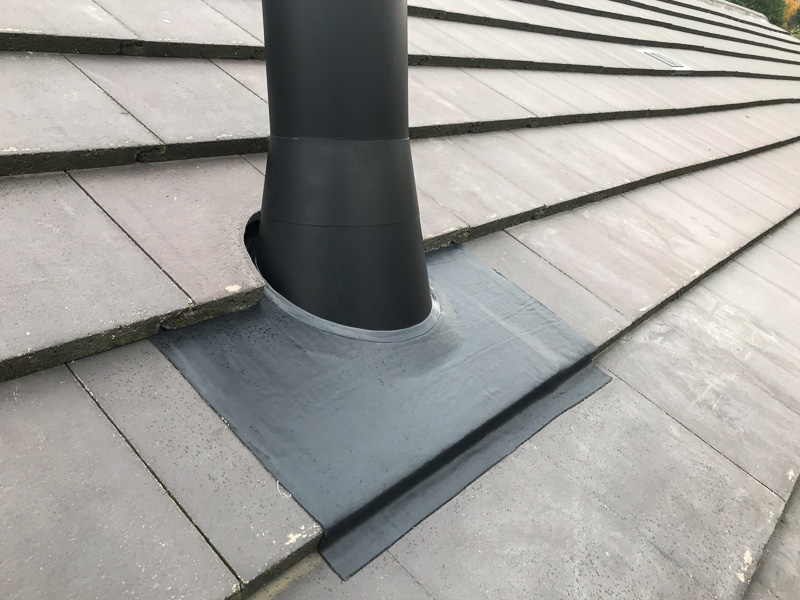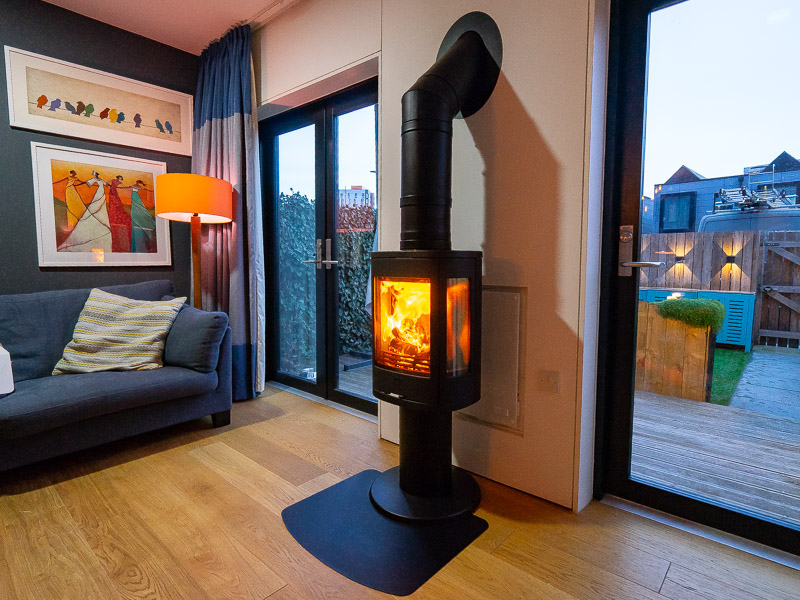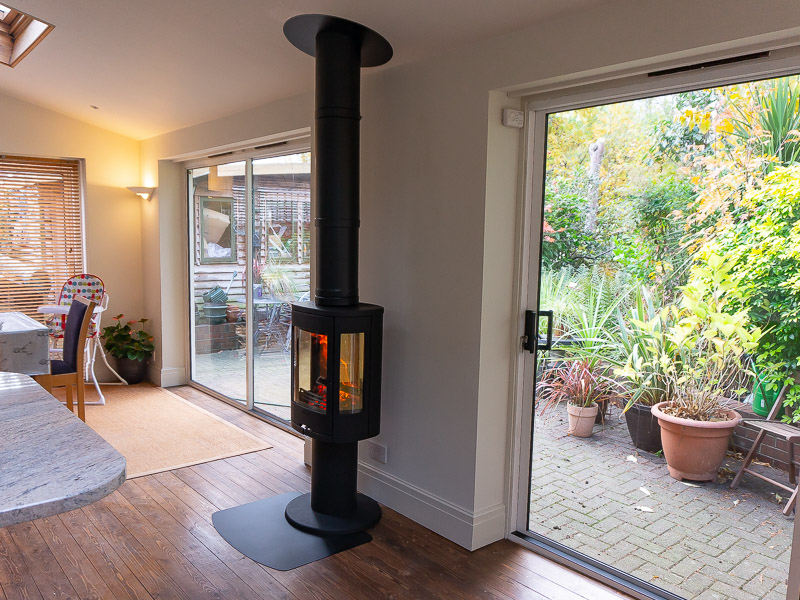Designing your wood burners look
There is lots of information online regarding wood burning stoves. Some good, some bad. This can make your decision harder than needs be. To simplify things there are four choices to consider. Squared opening, oak beam, Mantlepiece or if your property was not built with a chimney suitable to accommodate a wood burning stove, this is still possible using a twin wall flue. The options are explained below as well as the materials available. Please see our gallery page for more examples of each look.
Squared opening
A squared opening is a clean minimal contemporary look; the wood burning stove simply stands on the hearth inside the chimney opening with no beam or mantle above. The stove is the star of the show.
Oak beam
Nothing compliments a wood burning stove more than a beautiful natural oak beam. Each piece is unique and as well as being practical, they also add character to the room. Our beams are sprayed with a hard wax oil which gives them their high quality finish.
Mantles and surrounds
A mantelpiece whether an original antique marble, or a modern contemporary limestone surround is a great way to keep a traditional look and feel to the room whilst still benefiting from the high efficiency of a modern wood burning stove.
twin wall flues
Twin wall flues allow stoves to be installed in properties that don’t have flues suitable for solid fuel – whether in an extension or in houses without chimneys, or in some cases where the original chimney breast has been removed. Installing a stove is still possible using a twin wall flue system.
Hearths
The hearth is the base that extends out in to the room, the stove stands on the hearth and its there to stop hot ashes and embers from damaging the floor. There are many different materials used for hearths such as slate, stone, granite and tiles.
Slate
Riven slate is created by splitting along the natural fault lines of the slate to produce an unpolished rustic look and reveal the natural blue and grey tints of the stone. It’s popular for fireplace construction due to its beautiful deep, muted finish. We stock slate in large slabs which enable us to cut the whole hearth from a single piece, this eliminates any unsightly mortar joints that hearths laid in numerous sections create.
When slate is unoiled it has a natural colour of matt grey / blue. When slate is oiled it gives the slate a darker appearance of blue / black, eventually the oil will soak in and the slate will return to its lighter natural grey colour, although if you prefer the darker tone, a regular coat of oil will retain its wet look.
All of the images for the slate slider are of the same slate material yet the darker slate has recently been oiled.
Yorkshire Sandstone
Sandstone has a timeless look, Sandstone is an extremely versatile natural material and has been used for thousands of years. Its uses provide a variety of products such as paving, walling, roofing and masonry. Sandstone can be seen throughout the UK in many prestigious structures and grand landscape surroundings.
Quarried in West Yorkshire, This Buff/Yellow Sandstone has a uniform close grain with dark flecks which are black iron oxide. The honed finish is smooth but without any traces of a shine.The surface is however fairly porous and treatment is essential to prevent it absorbing soot and ash.
Quarry tiles
Quarry tiles are made from clay and once fired become very hard. They come as 6″ tiles in black, terracotta and cream but can be cut in to smaller tiles to make diamond patterns. They are very hard wearing and perfect for a fireplace hearth.
The diamond pattern hearths are hand made and look great with a fireplace surround stood on them. Perfect for people wanting to maintain some of the houses original styles and features.
Openings walls – Boarded or Brick
The inside of the opening that the stove sits in is referred to as the chamber, There are two options when it comes to the walls of the chamber, Lining the walls with a heat resistant fireboard gives a neat, clean and smooth finish. the boards can be left white or painted afterwards using any water based emulsion.
For people wanting a more rustic look, occasionally the original brickwork can be cleaned and repointed, I say occasionally because the brickwork was never intended to be seen and poor quality bricks were used, also due to staining from soot it’s usually more cosmetically pleasing to board over the old stained and chipped bricks. Although some chambers are in surprisingly good condition. Keeping the original brickwork is just a case of opening up the chamber to reveal the condition of the walls and deciding which option would work best.
For people who are really stuck on having brickwork, There is now the option to have brick board panels that are slithers of real brick stuck on to a fireboard and fixed over the old brickwork. This gives the look of a brick chamber without loosing the depth and width that a standard brick would use. (see images below)
Fireboarded chamber
Special heat resistant fireboard is used when lining the chambers walls, It gives a clean and contemporary look and is the most popular choice for chambers. Fireboard is designed with one smooth face that does not require plastering afterwards unlike regular plasterboard, many customers leave the boards unpainted as it has a neutral off white colour. Although if you would like to paint the boards, using regular water based emulsion is fine.
Original brickwork chamber
Cleaning and repointing the original brickwork of the chambers walls can be a worthy task, Unfortunately opening up a chamber which reveals nice enough brickwork to restore is rare due to the fact that the brickwork behind the original fireplace was never intended to be seen, So it was never laid particularly neat and often old damaged bricks were used. Also decades of coal fires tend to leave the bricks very stained. Restoring the original brickwork is usually a case of seeing what condition they are in and making a decision from that. A brickboard chamber set is a good alternative if you dont want to take that risk.
Brickboard panel chamber
Brick boards are a cladding panel made from real brick & fire resistant board specially designed for fireplace openings, indistinguishable from traditional brickwork, unlike some of the faux brick alternatives they are made from real bricks. They are then hand pointed with real mortar for a truly authentic finish. A complete set is one back panel and two side panels that can be made to size to suit every chamber. The bricks can also be laid in different patterns such as herringbone and basketweave.
mantelpieces & Surrounds
The mantelpiece is the decorative statement and focal point to a room that holds everything together. Made from either wood, stone or marble. Surrounds retain a traditional aspect of a home. Whether the properties original surround is to be removed and put back, or a new surround is to be added. Its a grand focal point to any room, and the off white tones of limestone are perfectly suited in modern contemporary settings.
Stone mantles
Agean Limestone has a unique texture and the classy character of these fireplaces make a bold and lasting statement in any home. Limestone`s creamy whites are consistent in colour and fit perfectly with both period homes and modern, contemporary interiors. A perfect combination when contrasted with a slate hearth and slate framing slips.
Marble mantels
It’s not surprising marble has been used for surrounds for many centuries. Usually made from Italian carrara this stunning timeless material has darker vein patterns entangled over a lighter grey background. Its high polished finish gives it a smooth feel.
Twin Wall flue systems
Twin wall flues allow wood burning stoves to be installed where a chimney breast is not present, for example in extensions or properties built after the 1960″s which have flues suitable only for gas. Generally available in silver (reflective chrome-like) and black (satin/matt finish). Twin wall flue is a metal tube (flue) insulated with approx an inch of insulation (two layers of stainless steel with insulation between). This allows the flue to pass internally through walls or ceilings or externally on an outside wall. Twin wall flues are usually paired with ‘freestanding’ style stoves. Most models of this type allow the hearth to sit directly on top of floors, Traditional slate can be used or contemporary glass hearths with a minimum thickness of 12mm which are available in many different shapes and colours.
Twin wall flues can be installed in two ways, either through the roof of the building or through the wall at a 45 degree angle and then up the side of the building terminating above the gutter. Single storey extensions tend to be installed through the roof and two storey buildings tend to have the flue going through the wall at a 45 degrees above the stove and then running up the outside of the building, terminating above the roof line.


